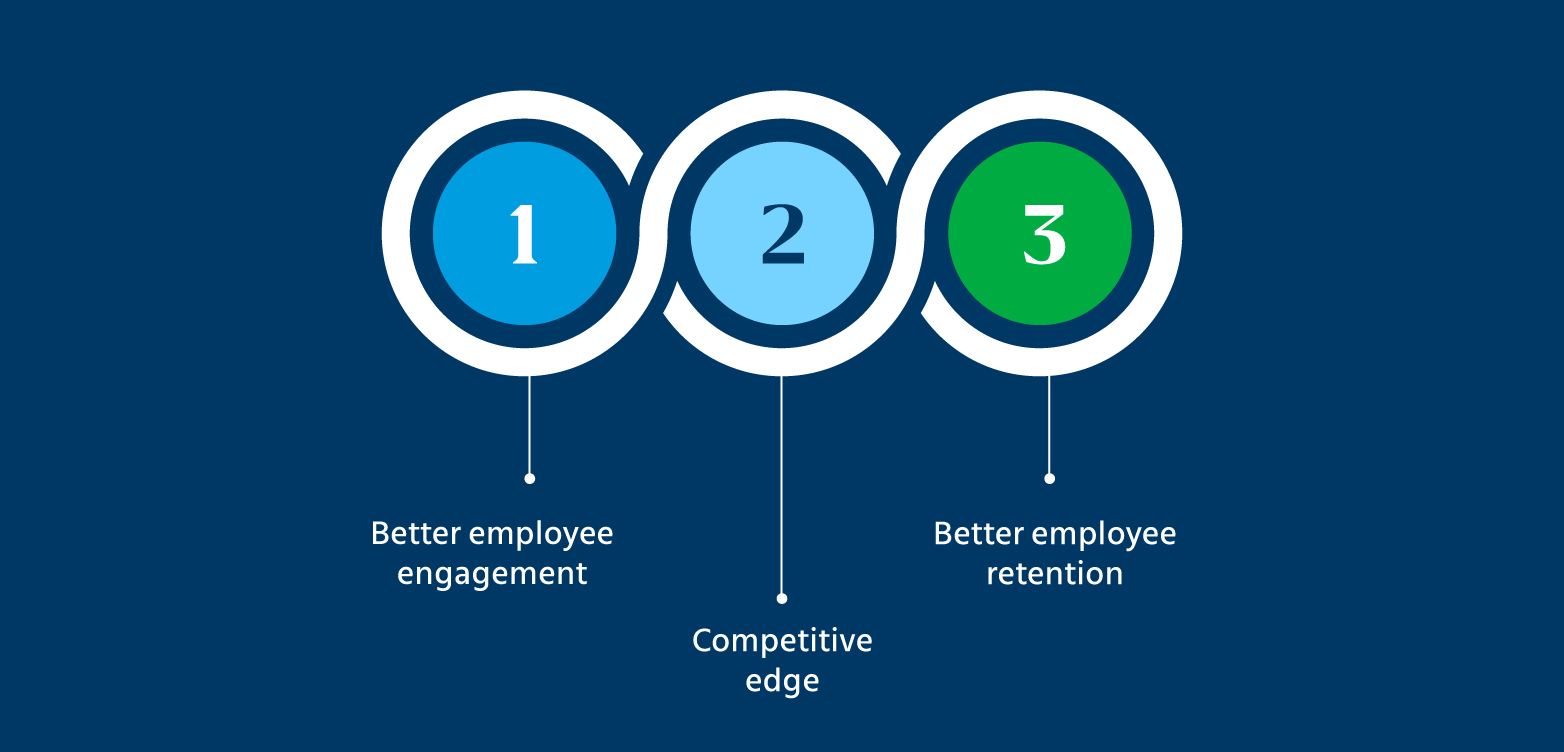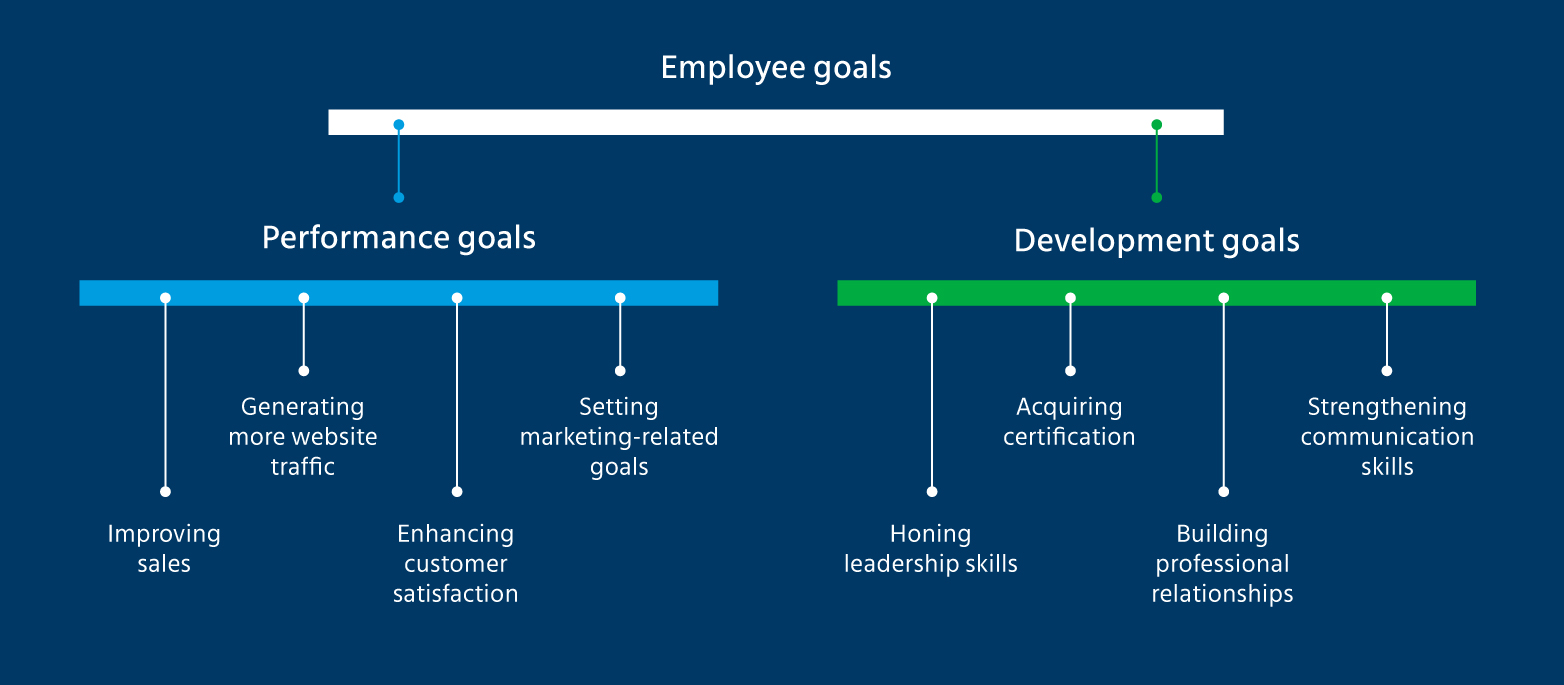
1. Write SMART goals:
Defining and setting up employee goals should be a collaborative effort and follow the basic SMART guidelines.
Specific: Define clear achievements with zero ambiguity in understanding.
Measurable: Define goals that can be measured qualitatively or quantitatively.
Achievable: Ensure that goals are realistic.
Relevant: Align goals to organizational objectives.
Time-bound: Define timelines for goal achievement.
The guidelines can be made SMARTER by adding the following:
Evaluate: Regularly monitor performance to ensure progress is being made.
Readjust: Flexibly modify the plan based on real-time needs.
2. Develop a measurement infrastructure
Specific goal measurement aspects must be defined to assess employee progress and efforts. It is important to establish KPIs that focus on improvement, such as team productivity, job satisfaction, skills gap, etc.
3. Performance tracking
Use performance evaluations or tracking as a regular feedback mechanism to help employees optimize their development and growth.
4. Modifying goals
The business landscape is evolving rapidly, which means that any set goals may also require modification with time.









 Behavioral Competencies
Behavioral Competencies Cognitive Competencies
Cognitive Competencies Coding Competencies
Coding Competencies Domain Competencies
Domain Competencies



































